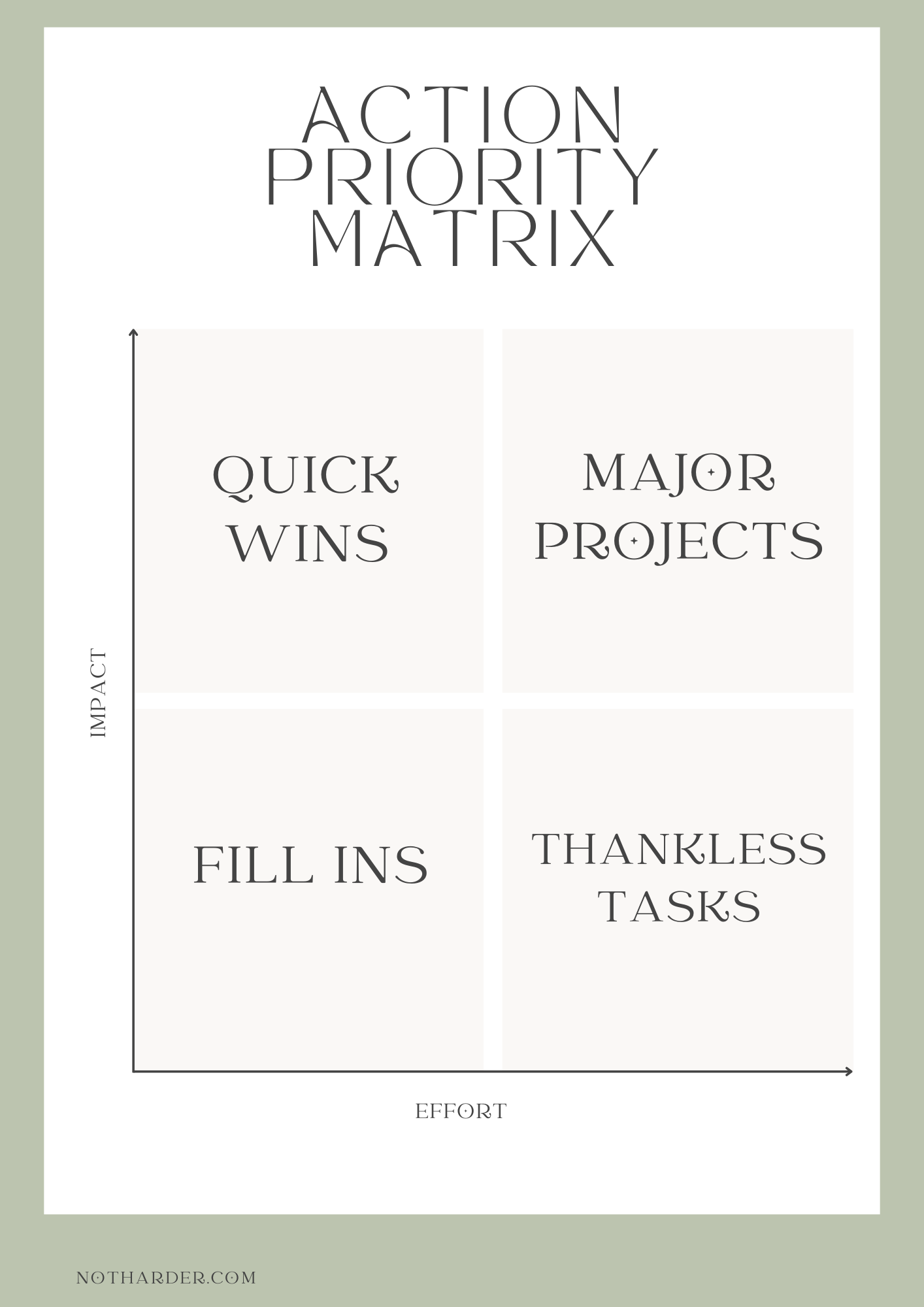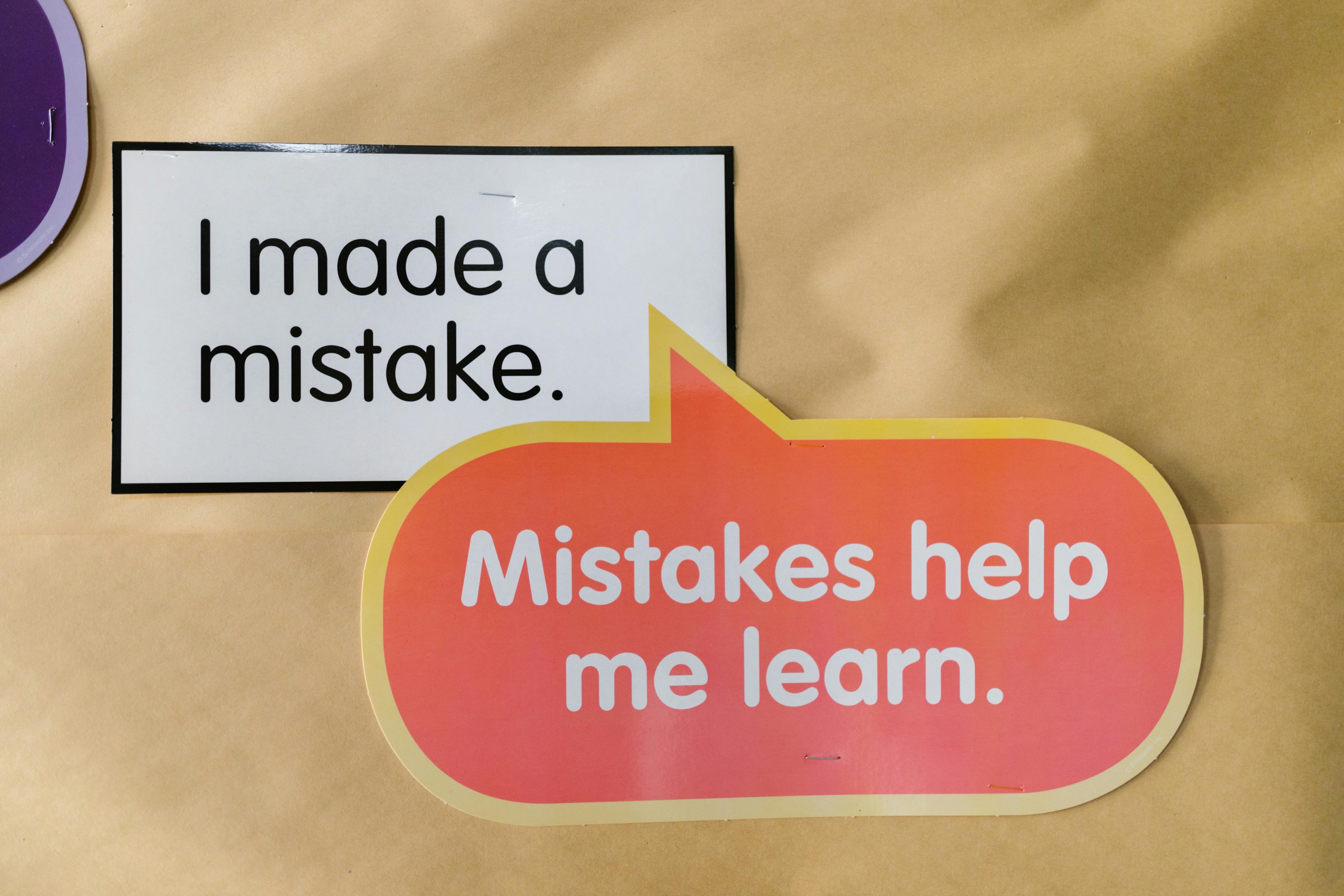Sometimes our tasks pile up so high it’s hard to make heads or tails of them. Prioritizing what to do first can be tricky, too.
Often, we default to the easiest or most accessible activity, which is usually not our most urgent or important task. One way you can easily prioritize your agenda items is to plug them into an Eisenhower Decision Matrix based on urgency and importance.
Let’s talk about what it is, how to use it, strengths and weaknesses, and Eisenhower Matrix alternatives like the Action Priority Matrix.

What is the Eisenhower matrix in simple terms?
The Eisenhower Matrix is a tool to manage and prioritize tasks. It divides tasks into four quadrants based on how important and urgent they are: what to do first, what to plan, what to delegate, and what to toss.
If it’s important and urgent: DO IT
If it’s important but not urgent: SCHEDULE IT FOR LATER
If it’s not important, but it is urgent: GET SOMEONE ELSE TO DO IT
If it’s neither important nor urgent, does it need to get done? PROBABLY NOT
Basic steps to create an Eisenhower Matrix
1. List all your tasks.
2. Categorize each task into one of the four quadrants based on urgency and importance.
3. Focus on completing tasks in the “important and urgent” quadrant first to take care of things that need immediate attention.
4. Schedule time for “important but not urgent” tasks.
5. Delegate, automate, or find other ways to handle “urgent but not important” tasks.
6. Eliminate or minimize tasks in the “not urgent and not important” quadrant.

Example of the Eisenhower Matrix
Let’s look at a hypothetical of someone using a prioritization matrix in their personal life.
Say you’re a WFH parent with a gig as a digital assistant, the kids are on summer vacation, and you’re starting your day. Your task list might look like this:
- update the company website
- post today’s Instagram poll on the company account
- cook dinner
- clean the kids’ rooms
- walk the dog
- add last minute changes to your boss’ itinerary
- read a new fanfic installation
- make sandwiches for lunch
- respond to email inquiries from potential clients
- respond to other emails
- change the baby’s diaper
- unload the dishwasher
- play your turn on Words With Friends
Now let’s prioritize these tasks with the Eisenhower Matrix template.

According to our matrix, this is how your day might shake out based on the urgency and importance of your tasks.
DO NOW
1. Change the baby’s diaper–why did you even take the time to put this in an Eisenhower Matrix?
2. Add those changes to your boss’ itinerary–there might be something they need to know this morning.
3. Respond to potential client emails–those are time sensitive because we want them to hire us and not move along to the next option.
FOR LATER
1. Throw a roast and some carrots in the crockpot to be ready for dinner.
2. We’ll make the sandwiches at lunchtime. Or get the kids to make their own.
3. After we’ve finished the essential DO NOW tasks, we can plan to update the website, post our poll, and wrap up email responses.
DELEGATE
1. The kids are cleaning their own rooms.
2. Assign one to walk the dog.
3. Assign another to unload the dishwasher. Yay, kids!
TRASH
1. Words With Friends.
2. Fanfic reading.
Now we don’t need to trash those things forever. They just don’t fit into our working hour prioritizations. Play your turn on WWF at some point, you monster.

Strengths & Weaknesses of the Eisenhower Matrix
The Eisenhower Matrix is helpful for its simplicity, clarity, delegation guidance, and the elimination of unnecessary pursuits when prioritizing tasks.
However, subjectivity can weaken the method. What are urgent tasks and what are important tasks? It will depend on who you ask, so it’s easy to misattribute a task, causing incorrect prioritization.
While its simplicity can be a strength, it’s also a weakness–not every task will fit neatly into one category. For example, walking the dog is probably important, but it might make more sense to delegate that than to do it yourself.
Another reason the simplicity can be a weakness is that the system is not particularly dynamic. It can’t account for priorities changing, surprises throughout the day, or the interdependency of your tasks. While one task could be non-urgent, it might need to be done in order to execute an important-urgent task.
Like all time management tools, the Eisenhower Matrix’s effectiveness varies per situation and user.

Eisenhower Matrix Alternatives: Other Ways To Prioritize Tasks
Here are a few prioritization methods you might try as an alternative to the Eisenhower Matrix. These other methods might suit your needs better.
1. The 80/20 Principle
The 80/20 Principle operates on the assessment that 80% of your effectiveness comes from 20% of your effort.
Finding that 20% of effort can help you in prioritizing tasks in a broader sense, concerning which areas of your life/company you should focus time and resources on.

2. ABC Analysis
In an ABC Analysis, sort your tasks into three categories.
A: Most important tasks that must be done immediately.
B: Important tasks that are less urgent.
C: Low-priority tasks that can be done later or delegated.
This is similar to the Eisenhower Matrix, except it might require more direct thought on your part (which could be a strength), and it assumes you have no tasks to throw out.
3. MoSCoW Method
Tasks are categorized as:
- Must have
- Should have
- Could have
- Won’t have (at this time)
This method prioritizes tasks based on necessity and value. It might be more suited for project and team management than it is for daily or personal task management.
4. Time Blocking
Time blocking is a bit more involved, instructing that you divide your day into blocks with a focus or task for each block. This reduces time consuming switching costs, helping you save time. Setting up the schedule requires significant effort compared to an Eisenhower Matrix.
5. The Action Priority Matrix
The action priority matrix is most similar to the Eisenhower, with four quadrants for assigning tasks based on effort and impact.

High impact with low effort is a Quick Win → Do immediately.
Quick wins are low hanging fruit you can knock out with little effort. These are great to do early in the day to wrap things up and build momentum.
High impact with high effort is a Major Project → Schedule and plan.
The major projects take some mise en place to minimize time spent and maximize focus.
Low impact with low effort is a Fill-In → Do in between other tasks.
Low impact tasks are those like shooting an email back to a coworker or cleaning up your desk.
And low impact for high effort is a Thankless Task → Minimize or eliminate.
Thankless tasks are like the daily newsletter you send to your employees that no one even pretends to open. They’re not interested in your Pinterest quotes, John. I need you to stop.

Key Points
The Eisenhower Matrix is a task prioritization tool that separates your tasks into URGENT & IMPORTANT tasks to do immediately, NOT URGENT & IMPORTANT to schedule for later, URGENT & NOT IMPORTANT for delegation, and NOT URGENT & NOT IMPORTANT for minimization or deletion.
This tool is helpful for quickly sorting tasks in a simple visual format, but it might lack the complexity required for more dynamic task management.
Alternatives for the Eisenhower Matrix could be the 80/20 Principle, an ABC Analysis, the MoSCoW Method, Time Blocking, or the Action Priority Matrix.
7 Comments